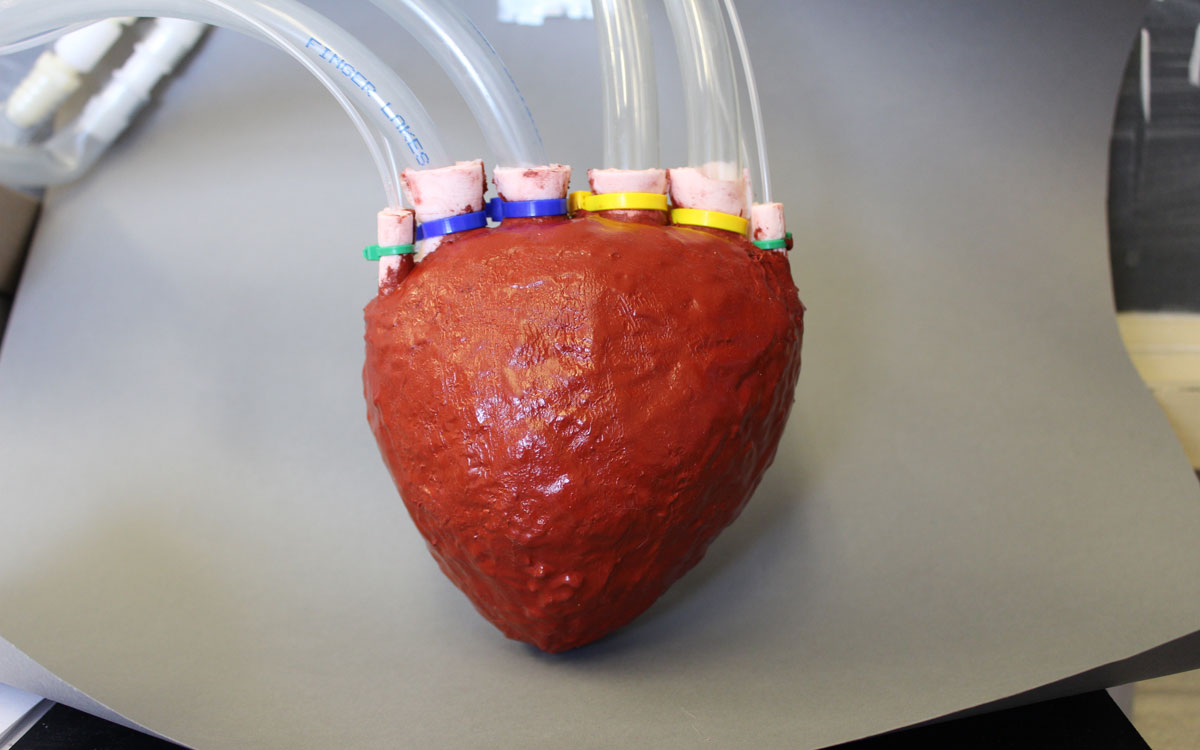
Remember those colorful sticky hands that you used to buy for a quarter from grocery store vending machines? Yeah, this is kind of like that -- except that it's a freaking robot. DARPA is currently working to develop low-cost silicone robots that use both air and fluid to control movement, color and temperature. In the following video, you can see one of these soft contraptions as it journeys onto a bed of rocks and then uses colored liquid to blend into its surroundings. Don't expect this glorious sticky hand to break any land speed records, however; the silicone bot can travel approximately 40 meters per hour, or up to 67 meters per hour without the fluid. (Even the 30 second video, which goes at a snail's pace, has been sped up five fold.)
The current demonstration implements a tethered solution as the robot's source of power, pumps, gasses and liquids, but future developments may allow for a self-contained system. Further, rather than improving the robot's speed, its developers will instead focus on its flexibility as a means for navigating within tight spaces. Be sure to peep the video below, and we think you'll agree that DARPA's creation easily puts those sticky hands to shame.
Continue reading DARPA's low-cost silicone robot cloaks like a chameleon, treks like a snail (video)
Filed under: Robots
DARPA's low-cost silicone robot cloaks like a chameleon, treks like a snail (video) originally appeared on Engadget on Fri, 17 Aug 2012 01:15:00 EDT. Please see our terms for use of feeds.
Permalink |
 DARPAtv (YouTube)
DARPAtv (YouTube) |
Email this |
Comments
 Researchers from Harvard University and Boston Children's Hospital have developed a breakthrough "soft robot" device that might improve your odds of surviving a heart attack. Unlike mechanical devices inserted into heart valves, it's wrapped external...
Researchers from Harvard University and Boston Children's Hospital have developed a breakthrough "soft robot" device that might improve your odds of surviving a heart attack. Unlike mechanical devices inserted into heart valves, it's wrapped external...
 Researchers from Harvard University and Boston Children's Hospital have developed a breakthrough "soft robot" device that might improve your odds of surviving a heart attack. Unlike mechanical devices inserted into heart valves, it's wrapped external...
Researchers from Harvard University and Boston Children's Hospital have developed a breakthrough "soft robot" device that might improve your odds of surviving a heart attack. Unlike mechanical devices inserted into heart valves, it's wrapped external...
 Soft robots aren't just about speed and grace... they should be safer, too. To prove that point, MIT's CSAIL has developed bouncing robots whose 3D-printed soft skins act as shock absorbers. The technique revolves around printing a "programmable vi...
Soft robots aren't just about speed and grace... they should be safer, too. To prove that point, MIT's CSAIL has developed bouncing robots whose 3D-printed soft skins act as shock absorbers. The technique revolves around printing a "programmable vi...
 See that pretty translucent octopus up there? That's not a toy or a real (but strange) creature from the deep: it's a soft robot developed by a team of Harvard University researchers, and it's completely autonomous. "Octobot's" components, including...
See that pretty translucent octopus up there? That's not a toy or a real (but strange) creature from the deep: it's a soft robot developed by a team of Harvard University researchers, and it's completely autonomous. "Octobot's" components, including...
 Researchers from Cornell University have developed a potential skin material that lights up and stretches to more than six times its original size. The so-called hyper-elastic, light-emitting capacitors (HLECs) are made from transparent hydrogel elec...
Researchers from Cornell University have developed a potential skin material that lights up and stretches to more than six times its original size. The so-called hyper-elastic, light-emitting capacitors (HLECs) are made from transparent hydrogel elec...
 Soft robots that bend and stretch are cool concepts, but there's usually a lot of clunky hardware involved to make them work, like air compressors and gas generators. They're seldom practical in real life. However, Okayama University researchers...
Soft robots that bend and stretch are cool concepts, but there's usually a lot of clunky hardware involved to make them work, like air compressors and gas generators. They're seldom practical in real life. However, Okayama University researchers...
 Artificial hearts only kinda-sorta behave like the real thing. They pump blood, sure, but they're typically solid blocks of machinery that are out of place in a squishy human body. Cornell University thinks it can do better, though: its scientist...
Artificial hearts only kinda-sorta behave like the real thing. They pump blood, sure, but they're typically solid blocks of machinery that are out of place in a squishy human body. Cornell University thinks it can do better, though: its scientist...



